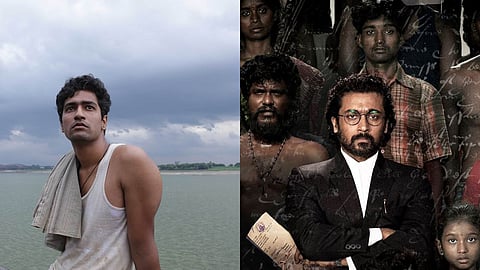
- HOMEGROWN WORLD
- #HGCREATORS
- #HGEXPLORE
- #HGVOICES
- #HGSHOP
- CAREERS
- ABOUT US
- CONTACT US

On July 4, 1991, in Tsunduru, Andhra Pradesh, a Dalit man named Govatota Ravi was watching a film when, in the dark of the theatre, his feet touched the back of a seat which was occupied by a dominant caste Hindu man named Kurri Srinivasa Reddy. A minor altercation ensued between the two men and Reddy abused Ravi by calling him a casteist slur. This seemingly isolated incident catalysed pre-existing caste tensions between the Reddy and Telaga dominant caste Hindus and the Mala and Madiga Dalit communities of Tsundur, leading to the killing of 8 Dalit men a month later, on the morning of August 6, 1991.
Caste is all-pervasive in our society. Its long, lethal tendrils are seemingly inescapable. Like an invisible predator, it stalks Dalits — India’s historically oppressed caste groups — and follows them wherever they go. The reality of their life is near impossible to imagine or understand for anyone who does not have the lived experience of being Dalit in India. Dalits are othered, marginalised, disenfranchised, invisibilized, condescended to, and tokenized by India’s Brahminical society. But you wouldn’t know this if you looked at Indian movies — the much-vaunted 'mirrors' of our social reality.
Since its early days, Bollywood — India’s largest mainstream film industry — has had a persistent problem of caste-blindness. For much of its long and glamorous history, caste has been the invisible elephant in Mumbai’s film studios. Mainstream Hindi cinema not only avoids the issue of caste, but it perpetuates dominant caste hegemony through how caste is represented in Hindi films. While Brahmanical and dominant caste identities are lionised, Dalit identities are reserved for films that are 'socially oriented', and only if there is a specific caste angle to the plot, often by way of a trauma trope. Despite a handful of films like Sujata (Bimal Roy, 1959), Bandit Queen (Shekhar Kapoor, 1994), Bawandar (Jag Mundhra, 2000), and Aarakshan (Prakash Jha, 2011) addressing caste issues over the years, Dalit protagonists have remained a rarity in Hindi films, especially across popular, commercial mainstream Hindi films.
Ironically, Hindi films frequently use India’s widening class divide and wealth inequality as a narrative device, without addressing or acknowledging the caste implications of class in India. Even the parallel cinema or the New Indian Cinema movement, with its progressive, critical, and Left-leaning sensibilities failed short on this front with its largely stereotypical representation of Dalits as powerless victims of Brahmanical exploitation.
Starting in 2014, however, this began to change with a seemingly sudden emergence of a new wave of Dalit cinema from Tamil Nadu, Kerala, and Maharashtra which placed Dalit characters front and centre. This new wave of Dalit Cinema also represented a stark shift in representation in terms of who was allowed to tell these stories and make these films.
From largely Savarna or dominant caste liberal and leftist film-makers who saw Dalits as people who needed to be saved and were in need of Savarna saviours (like Ayushman Khurrana’s Ayan Ranjan in Article 15), 2014 represented the arrival of Dalit film-makers like Pa Ranjith, Nagaraj Manjule, and Neeraj Ghaywan, who recognise Dalits as their own heroes and messiahs — an oppressed and othered people willing and able to save themselves.
The films made by this new generation of Dalit film-makers in the decade between 2014 and 2024 encompass the broad spectrum of Indian cinematic genres, from hyper-masculine revenge fantasy as in Kabali (Pa Ranjith, 2016), Kaala (Pa Ranjith, 2018), and Asuran (Vetrimaaran, 2019) to brutal social realism as in Masaan (Neeraj Ghaywan, 2015), Sairat (Nagaraj Manjule, 2016), Jai Bhim (T.J. Gnanavel, 2021), and Santosh (Sandhya Suri, 2024).
Rooted in the historic Dalit struggle for dignity, representation, empowerment, and emancipation, these films fall somewhere between the mass-y masala action entertainers that Bollywood and the South Indian film industries are known for and the arthouse social justice narratives of parallel Indian cinema. They defy all genre definitions and expectations to imagine a new Dalit protagonist: shaped and redeemed by righteous, revolutionary violence.
Violence in these films serves its function not only as a response to majoritarian, dominant caste violence inflicted upon Dalits; but as an instrument of retributive justice and the catharsis it offers. In most of these films, the Dalit protagonists redeem themselves not as heroes, but as anti-heroes scarred by the Brahminical power structures, which they aim to and often succeed in subverting in these cinematic imaginations of Dalit power.
If cinema is indeed a mirror of our social realities, do the commercial success and mass appeal of these films mean that India is finally rejecting its casteist past and turning towards a more just, more equal future?
It would be premature and perhaps even naive to say anything for certain just yet. But we certainly appear to be entering a new age of Dalit representation, agency, and self-assertion — at least in the emerging and imagined India of New Dalit Cinema.
